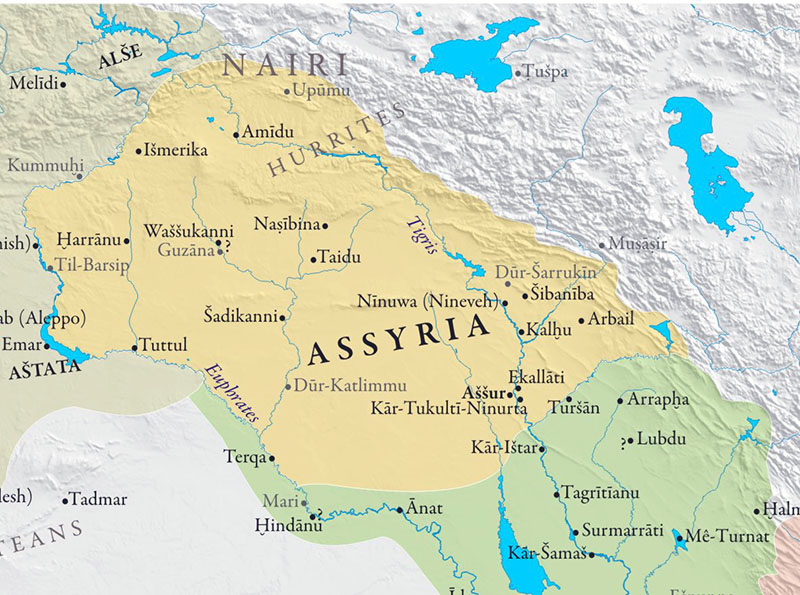In the XV century BC, Assyria was under the rule of Mitanni emperors. Mitanni emperor Shaushtatar defeated the Assyrians and taken the city Ashur, but Mitanni Empire began to weaken, which Ashur-ubalit I (1365-1330) used and freed Assyria from Mitanni authority and in that way he provided to the country a recognition. Under his rule was also an area in the northern mountains, he came all the way to the Euphrates, which opened the way for trade with Syria. In Babylon, the power was determined by family relationships.
Ashur-ubalit’s successors:
Adad-Nirari I – came all the way to west, to Syria and he conquered a wide territory of Haran to Karhemish.
Shalmaneser I (1274-1245) – led expeditions to the east and north, which was concluded by the conquest of the eastern part of the Mitanni kingdom.
Tukulti-Ninurta I (1244-1208) destroyed Babylon. Conquests of this ruler to the east and north were also important. He conquered there the Hittites,
Tiglath-Pileser I (1115-1076) – established the former power of Assyria. On the Phoenician coast he conquered an important cities of Byblos, Sidon and Arvad and he imposed tax. He was also recognized by Egypt. He was trying to conquer Babylon. New threat to Assyrians was Armenians, which made incursions into Assyria. During his reign a 28 times, he clashed with the Syrians.
Tiglath-Pileser I beat them and pushed back to the west coast of the Euphrates. After his death, Assyria weakens and loses its territory.
Despite of Tiglath-Pileser I and his successor Ashur-nasir-pal I (1049 – 1031 BC) military operations, territory of Assyria was diminished more and more. At the end of the eleventh century, Assyrian rulers controlled only territory of Ashur in the south, all the way to Nineveh in the north, and from the Tigris in the west to the Arbela city in the east. The troubles have continued in the X century and they were caused by drought and famine. Assyrian chronicles recorded that people have begun to feed on human flesh. A rival Babylon could not take advantage of these troubles in Assyria, because he was in trouble. Babylon was more and more threaten by Kingdom Elam. In the middle of the XII century, these Elam attacks destroyed Kassites dynasty of Babylon, and thus ended the dominance of Kassites over central and southern Mesopotamia, which lasted about 400 years.



Around 1100 BC the Aramaic tribes started to spill over on to the territory of Mesopotamia causing instability, destruction and food shortages. The troubles reflected also on to the population decline. The troubles that happened to Babylon found its reflection in The Epic of Gilgamesh. These consequences were visible until the end of the X century. There is almost no information about rulers of Mesopotamian cities – countries in the XI and X century. The situation was further aggravated by the presence of the Chaldeans in southern Mesopotamia between 1100 and 900 BC. Around 900 BC Assyria again began to strengthen. Armenians were pushed out of the valley Tigris, and control was restored over northern Mesopotamia. In 892 BC a peace treaty with Babylon was signed, which secured to the Assyrians a southern border and in a way they were allowed to start conquest of the north and west.
